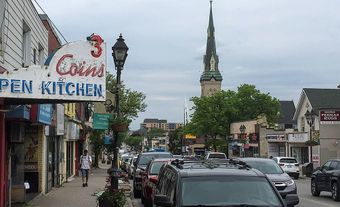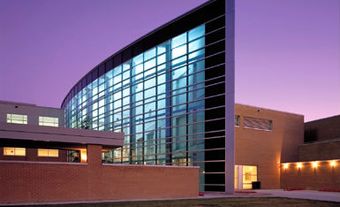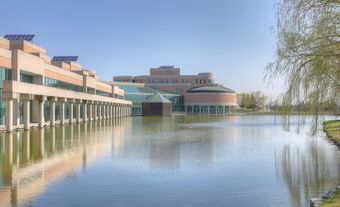Vaughan, ON, incorporated as a city in 1991, population 323,103 (2021 census), 306,233 (2016 census). The City of Vaughan — which includes the five constituent communities of Maple, Kleinburg, Concord, Woodbridge and part of Thornhill — is located in the York regional municipality, next to the northwest boundary of metropolitan Toronto. Traditionally an agricultural and milling community, Vaughan’s economy diversified over the latter half of the 20th century as immigration increased and the township developed into a city. Today, Vaughan is a multicultural community with a growing metropolitan core.
Settlement
Indigenous Peoples
Modern-day Vaughan stands on the traditional territories of the Haudenosaunee and the Huron-Wendat. These Iroquoian-speaking First Nations farmed vegetables, fished, hunted for small game and lived in longhouses. A popular hunting and travelling route was along the Humber River, known as the Carrying Place Trail, part of which runs through what is now Woodbridge. Archeological remains of longhouses and traditional tools have been found at many sites in Vaughan including the Seed-Barker and Boyd sites (Woodbridge) and the Jarrett-Lahmer site (Maple).
With the arrival of Europeans in the 1600s, French traders and explorers allied with the Huron-Wendat and found enemies in the Haudenosaunee. The Iroquois Wars, fought over the control of the fur trade during the 17th century, depopulated the Huron-Wendat. European-introduced diseases, such as smallpox and measles, also decimated the Huron-Wendat population. After the wars, the inhabitants of Vaughan were a few French traders and the Haudenosaunee.
In the early 1700s, the Haudenosaunee left the Humber watershed for their territory in upper New York state. Sometime after 1720, the Haudenosaunee’s withdrawal from Vaughan made way for the migration of Algonquian-speaking Anishinaabeg peoples (including the Ojibwa, Algonquin, Chippewa, Mississauga, Potawatomi and Odawa) to this area. The Anishinaabe made alliances with the French traders and, later on, with the British.
(courtesy Native Land Digital / Native-Land.ca)
After the Conquest of 1760, the British signed treaties with Indigenous peoples in Upper Canada to gain access to their traditional territories for development and settlement purposes. The 1788 Toronto Purchase — which covers much of Vaughan, west of Jane Street (and also extends south into Toronto and north into King City) — surrendered the lands of the Mississauga of the New Credit to the British in exchange for gifts.
The Upper Canada treaties, negotiated between 1764 and 1862, similarly surrendered Anishinaabe territory in what became the City of Vaughan. In exchange for their territories, the British offered Indigenous peoples one-time payments and, in some instances, rights to fishing and reserved lands. As the political influence of Indigenous leaders over colonial officials weakened in the 1800s, nearly all of southwestern Ontario became covered by treaties.
Settlers and colonial officials gradually pushed Indigenous peoples off their territories and onto reserves in remote locations. The Indigenous population in many villages in Vaughan therefore decreased or disappeared. By 1830, only five per cent of the population of Upper Canada was Indigenous. One hundred and eighty one years later, in 2011, less than one per cent of the population in Vaughan identified as Indigenous.
European Settlement
Étienne Brûlé is thought to be the first non-Indigenous person to enter Vaughan in 1616 by way of the Carrying Place Trail. French traders used this trail during the fur trade, but they did not settle permanently in the area. Even after the British assumed control of what would become Canada in 1763, European settlement in Vaughan did not occur until after the American Revolution in 1783. The Loyalists — Americans who had supported the British during the war — fled their homes in search of a new place to live and work. British officials welcomed the Loyalists as they actively worked to settle Upper Canada.
Starting in 1791, Lieutenant-Governor John Graves Simcoe spearheaded plans to develop the colony. He divided Upper Canada into counties and townships for administrative purposes; commissioned the construction of roads (such as Yonge Street) for the movement of troops, supplies and communication; and planned for the clearing of trees and the building of homes, schools and other buildings. Simcoe’s developments were important for Vaughan because they provided the means for settlement and transportation to and from the village. The first settlers to arrive in Vaughan in the early 1800s were mainly Pennsylvania-Germans, followed soon after by immigrants of British and French descent from the United States. These early American settlers were farmers, but after 1840, most of the arable land in the area had been taken, and later immigrants — mostly from Britain — were millers, merchants, carpenters and the like. By 1840, Vaughan had 4,300 settlers — a considerable number of people given that there were only 54 settlers in the area 40 years earlier.
Development
Agriculture and milling were particularly important to the development and early economy of Vaughan. Common Vaughan crops included potatoes, wheat, peas and oats. Barley and rye growers sold their products to local distilleries to make beer. Livestock farmers often kept ducks, chickens, geese, cows, sheep and pigs. However, it wasn’t until the 1840s, with the introduction of horse-drawn farm equipment that livestock farmers increased their productivity and were able to sell their products on the British market.
With an influx of British tradespeople after 1840, milling also became an important part of Vaughan's development. It allowed for the grinding of wheat to make bread, the cutting of lumber to make houses and the weaving of wool to make textiles. Small communities grew around river sites, namely the Humber and Don Rivers, which were used to power the mills on the western and eastern boundaries of Vaughan, respectively. Milling attracted industry, settlers and tradespeople, such as tanners, shoemakers and blacksmiths. Vaughan’s first mill was created in 1801 along a Don River tributary, helping to form what would become Thornhill — Vaughan’s oldest hamlet. By 1860, many other Vaughan communities built mills, including Pine Grove, Elder’s Mills, Edgeley, Brownsville and Sherwood.
Nineteenth-century Vaughan also boasted two major industrial organizations, Woodbridge Agricultural Machine Works and Patterson & Brothers Manufacturers. These companies produced agricultural equipment and significantly contributed to the local economy. Woodbridge Agricultural Machine Works employed over 200 men by 1873 and Patterson & Brothers Manufacturers successfully catered to an international market. Woodbridge’s Abell Agricultural Works, founded in 1862, fueled much of the local economy until it moved to Woodstock in the late 1880s.
From the mid-1800s to 1935, Vaughan stagnated in terms of development and the economy. This was the result of the decline in milling, fluctuating grain prices, the introduction of mixed farming and the decline of soil fertility in the area. In addition, the Great Depression slowed Vaughan’s growth, even though its agricultural character somewhat lessened the economic downturn. It was only after the Second World War that Vaughan’s economy began to improve as more commercial and industrial developments were established and immigration increased. It was also during this time that water and sewer services expanded in parts of Vaughan. As a result of postwar growth, the township of Vaughan was incorporated as a town in 1971 and, exactly 20 years later, the town was raised to the level of a city.
In the 1980s and 1990s, Vaughan’s economy and population grew even more, changing the character of the area from a suburban collection of communities to an urban centre. Today, the City of Vaughan is further developing its urban core, known as the Vaughan Metropolitan Centre (VMC). Located in Woodbridge along Highway 7, the VMC includes a variety of retail and commercial institutions, condos and a link to the Toronto subway.
Cityscape
It was only in the 1900s that Vaughan’s landscape began to urbanize. With the construction of railway lines, roads and highways, and with the introduction of mass transit, the rural character of Vaughan began to fade. Farm lands and mill sites slowly turned into residential areas and commercial and retail establishments over the course of the century. Today, the Vaughan Metropolitan Centre boasts a number of high-rise buildings, outlet stores, restaurants and even a movie theatre in the shape of a UFO: Colossus Vaughan Cinemas.
However, heritage districts in Vaughan, such as parts of Kleinburg and Thornhill, retain their 19th century charm, as old buildings stand amidst modern establishments or have been repurposed. The Doctor’s House in Kleinburg, which was home to Dr. Thomas Henry Robinson between 1877 and 1929, is now used as a reception hall. In Maple, the Vellore school and township hall, created in 1837 and 1845, respectively, were once central village institutions; today, they are heritage buildings that double as community gathering places, just footsteps away from modern commercial establishments.
Population
Vaughan retained a stable population base of around 4,500 well into the 20th century. The Second World War sparked an influx of Eastern European immigrants as well as Italian and Jewish people. By 1960, the population of Vaughan was 15,957.
The influence of a growing Toronto changed the nature of the area and contributed to rapid population growth in the decades that followed. Between 1981 and 1991, Vaughan’s population grew from 29,674 to 111,359 — an increase of 275 per cent.
Twenty years later, in 2016, the population more than doubled to 288,301. Vaughan is considered one of the fastest-growing multicultural municipalities in Ontario. According to the 2016 census, Italian people make up the largest ethnic group, at 31.1 per cent of the population. Visible minorities account for 35.4 per cent of city residents, with South Asian, Chinese, Filipino and West Asian people comprising the largest communities within this group. In addition, people citing Russian and Canadian ethnic origins make up 8.4 per cent and 8 per cent of the population, respectively.
Economy and Labour Force
Today, Vaughan’s economy is strongly grounded in goods-producing and service industries. Retail trade was the number one industry in 2016, employing 11.7 per cent of Vaughan’s labour force; professional, scientific and technical services was a close second (10.7 per cent), followed by manufacturing (10.3 per cent).
Vaughan’s first immigrant labour force in the early 1800s was mainly made up of land-clearers and farmers. Settlers cut down trees to make room for houses and farms. They burned some of the cut-down trees, making valuable ashes that farmers could sell to the British government for use in the making of gunpowder. Potash was another early source of income for Vaughan farmers. In 1799, the Kendrick Brothers established the first potashery in Vaughan. Wheat and livestock farming, as well as milling, were also profitable. With the growth of its villages, Vaughan’s early 20th century labour force was made up of tradespeople, teachers, agriculturalists, businessmen and professionals.
After the world wars, inflation caused people in rural Ontario to flock to urban areas, such as Toronto. Vaughan’s close proximity to Toronto meant that people were inclined to start a life there and to commute to the bigger city for work. This was the beginning of Vaughan’s suburban communities, made up of various types of workers who either stayed in Vaughan to make a living or worked in Toronto.
Transportation
The Carrying Place Trail was the first most significant travel route in Vaughan before it was settled by Europeans. The creation of Yonge Street by John Graves Simcoe in 1793 was arguably the next most significant travel and transportation route running through Vaughan. Yonge Street is still a popularly traversed road in Vaughan, especially for those living in and around Thornhill, west of Yonge. There are a number of other important roadways that provide access across Vaughan and to other cities, including Bathurst, Dufferin, Keele and Jane streets, as well as Highways 400, 407, 27 and 50.
Today, Vaughan residents can use York Region Transit to get around the city, as well as to transportation terminals that provide access elsewhere. GO buses and trains service the constituent communities of Maple, Woodridge, Thornhill and Kleinburg. Opened in 2017, a TTC subway extension on Line 1 into Vaughan further connected the city to Toronto.
Government and Politics

There are two levels of government that provide services to Vaughan — a regional and local municipality. Vaughan exists within York Region, the higher level of government, which also includes eight other municipalities (Aurora, East Gwillimbury, Georgina, King, Markham, Newmarket, Richmond Hill and Whitchurch-Stouffville). The regional council is made up of people elected to sit on the various municipal councils. At the municipal level, Vaughan is governed by a mayor, three regional councillors and five local councillors. The council is elected every four years.
History
During the early 19th century, Vaughan was governed by the colony of Upper Canada. The township had both elected officials and government-appointed magistrates. The magistrates presided over the local leaders, and were often accused of being out of touch with the population. In the 1830s and 1840s, however, these elected bodies started to gain more political power. The Robert Baldwin Act of 1849 — Ontario’s first municipal statute — marked the beginning of Vaughan’s first true local government. Established in 1850, residents elected a five-member township council that had the power to appoint officers, levy local taxes, and other matters of local affairs. The first township hall was established in Vellore village on Concession 6 in what is now Maple.
In 1882, the newly created Village of Woodbridge split from Vaughan Township. Previously a hamlet, Woodbridge’s population of more than 900 residents earned it a new title and municipal government of its own. In 1971, Vaughan Township and the Village of Woodbridge merged once again, this time to form the Town of Vaughan. The Region of York assumed regional government responsibilities over the town and other communities in the same year, such as policing and welfare. Twenty years later, after much population growth, the Town of Vaughan became a city in 1991.
Did You Know?
In 1792, Lieutenant Governor John Graves Simcoe named the then township after Benjamin Vaughan. Vaughan was a wealthy, Jamaican-born British politician and one of the negotiators of the 1783 Treaty of Paris that ended the American Revolutionary War. Vaughan was also a defender of Black enslavement. He owned plantations in the West Indies and enslaved several hundred people during his lifetime. In 2020, in light of the Black Lives Matter movement, some residents of Vaughan proposed changing the city’s name. While the city council voted against this change, it did agree to rename Benjamin Vaughan Day (the August civic holiday) to John Graves Simcoe Day. Simcoe supported the abolition of slavery. (See also Black Enslavement in Canada.)
Cultural Life
A multicultural city with rural and urban centres, there is much to explore in Vaughan. Home to the Vaughan Metropolitan Core, Woodbridge hosts a number of commercial and retail outlets, but it also includes large conservation areas, including the Kortright Centre for Conservation and the Boyd Conservation Area. Along with Kleinburg and Maple, Woodbridge also has a large Italian population, evidenced by the Italian-inspired restaurants, stores and local clubs in the area.
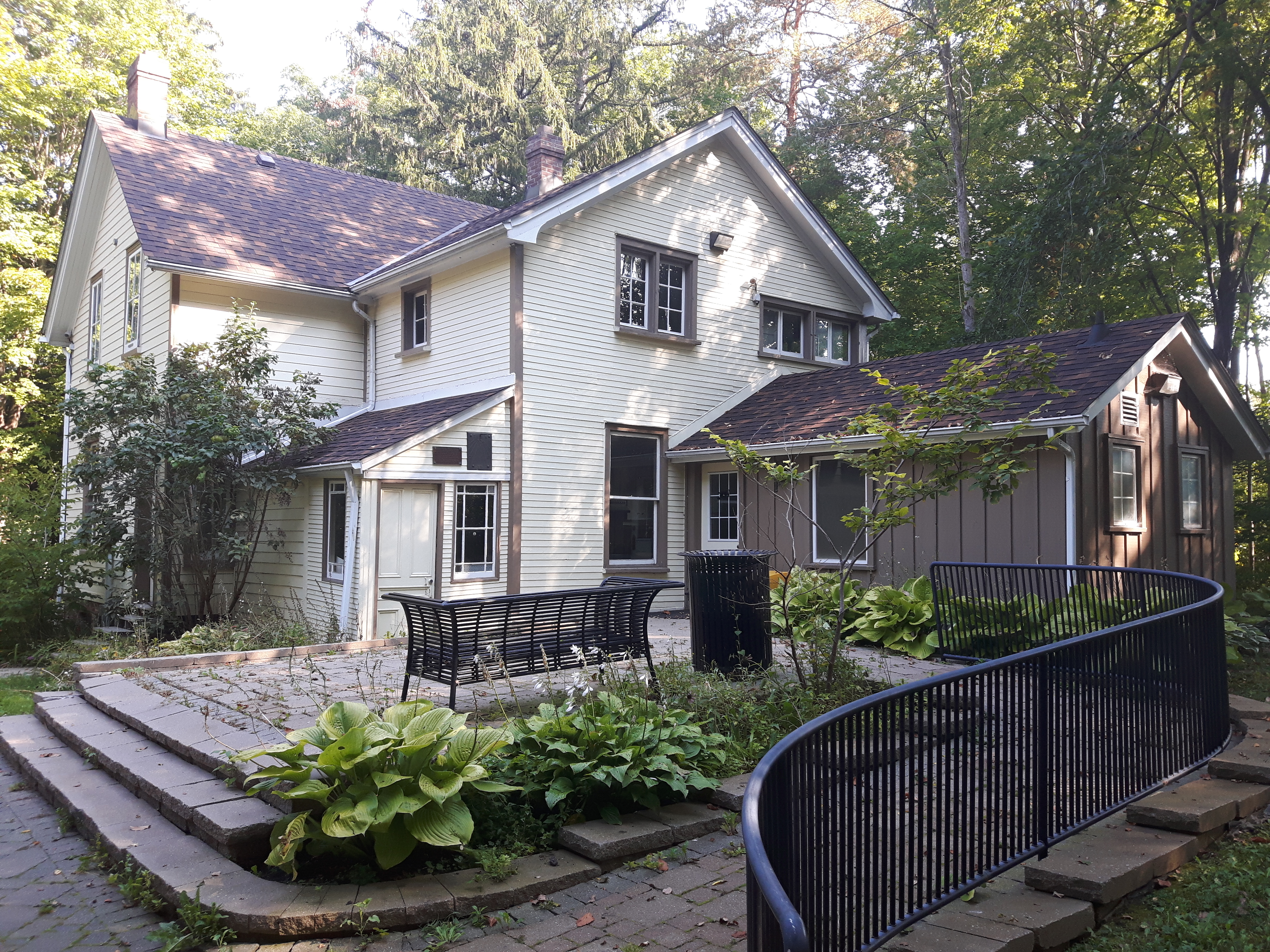
In Kleinburg, the McMichael art gallery is a well-known tourist attraction. The gallery houses much of the artwork of the Group of Seven, many of whom lived in Thornhill during the 1920s. In fact, the JEH MacDonald house, once owned by the Group of Seven artist, still stands in Thornhill. Kleinburg also hosts the Binder Twine festival each September. Originating in the 1890s, legend has it that twine-maker Charles Shaw Jr. held an annual celebration for the farmers who supported his business. Today, the festival features local buskers and craft-makers selling homemade items.
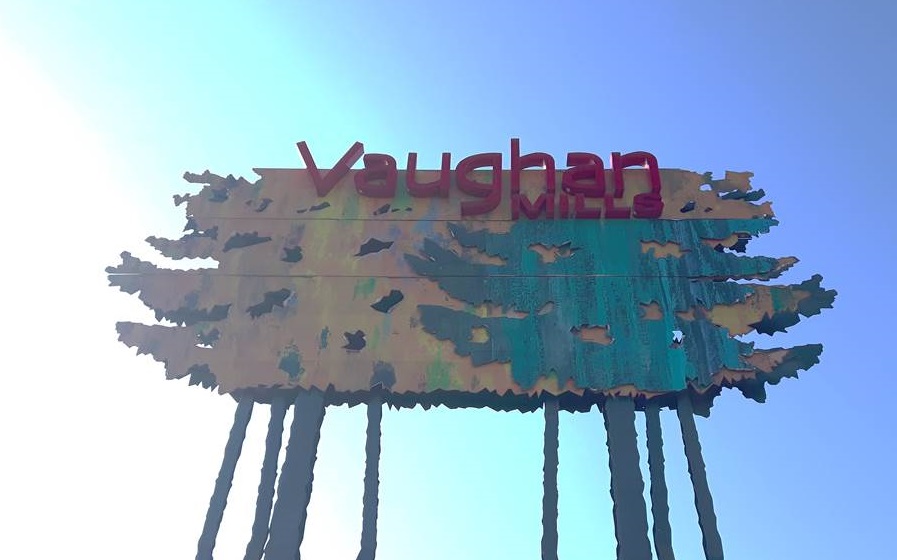
Maple’s most well-known attraction is likely Canada’s Wonderland — a summer amusement park drawing in crowds from all over Vaughan, Toronto and elsewhere. In Concord, the premier outlet mall, Vaughan Mills, is another big tourist attraction. Thornhill — a community with large Jewish and Filipino populations – has a number of community-oriented shops and restaurants, as well as a heritage district.
Some notable people who have lived and worked in Vaughan include journalist and politician Lord Beaverbrook (originally from Maple), cosmetics mogul Elizabeth Arden (Woodbridge), author and television personality Pierre Berton (Kleinburg), NBA player Andrew Wiggins (Thornhill), NHL players Andrew Cogliano and Frank Corrado (both from Woodbridge), and social entrepreneur Craig Kielburger (Thornhill).

 Share on Facebook
Share on Facebook Share on X
Share on X Share by Email
Share by Email Share on Google Classroom
Share on Google Classroom




